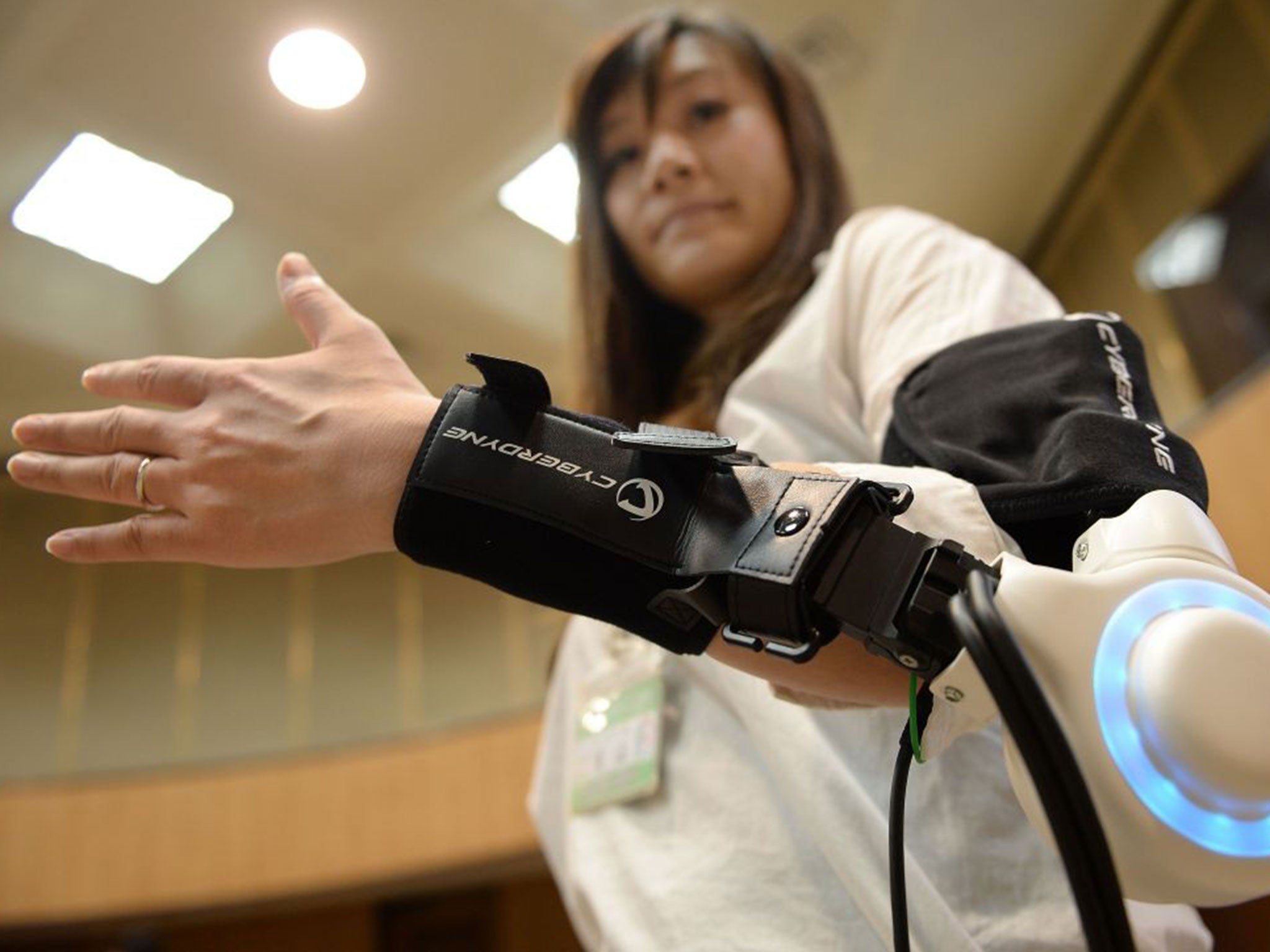Thought-controlled robotic suits: How the first cyborg-type robot could help the physically challenged

The Japanese robot manufacturer Cyberdyne has teamed up with Kawasaki, a city nineteen miles south of Tokyo, in a bid to introduce robot technology into health care. At a press conference, the robot maker demonstrated suits that are controlled by the wearer’s thoughts. Creating “a fusion of man and machine”, these suits act as external skeletons, aiding the user’s movements.
The new robot is able to detect the tiny electrical currents that occur on the skin when the wearer's brain sends a command for their limb to move. In response to these minute pulses, the mechanical suit moves in sync with the body. By providing the power that the patient’s own limbs lack, the robot enables movements that would otherwise be unachievable. In a similar way, the suit could be used in an industrial setting to help workers lift heavy objects.
The developers have dubbed their robot suit “HAL” ("Hybrid Assistive Limb"), although HAL is presumably safer in use than its fellow robot and namesake from the novel and film 2001: A Space Odyssey.
Cyberdyne’s mission statement is to put HAL to use “for the benefit of humankind”. At the press conference, Cyberdyne's founder Yoshiyuki Sankai voiced his commitment to developing technology that "actually helps people".
"We don't want people to see individuals wearing our products and think 'Gee, it must be so hard [to live with ailments]'," Sankai said. "Rather, we want people to see the robot and say, 'Wow, that's fantastic'".
Because HAL works by picking up the brain’s signals, the technology can also play an important role in rehabilitating people who suffer from disorders of the cerebral and nervous muscular system, such as those diagnosed with Musculoskeletal Ambulation Disability Symptom Complex (MADS) and certain spinal cord injuries, traumatic brain injuries and cerebrovascular diseases. These conditions form some of the major causes of limb dysfunction, as they disrupt the usual connection between the brain and the otherwise healthy limbs. By providing physical feedback in response to the brain’s intention to move, HAL helps patients find new routes of communication between their thoughts and their bodies more quickly.
The collaboration between Cyberdyne and Kawasaki is a working example of Japan’s national growth strategy. Published last summer, this plan outlines the country’s goal of becoming the world’s leading innovator, with special emphasis placed on advancement in medical technology. Cyberdyne and Kawasaki hope that their alliance will lead to an improved quality of life for the city’s inhabitants, as well as contributing to solutions for worldwide health issues.
Join our commenting forum
Join thought-provoking conversations, follow other Independent readers and see their replies
Comments